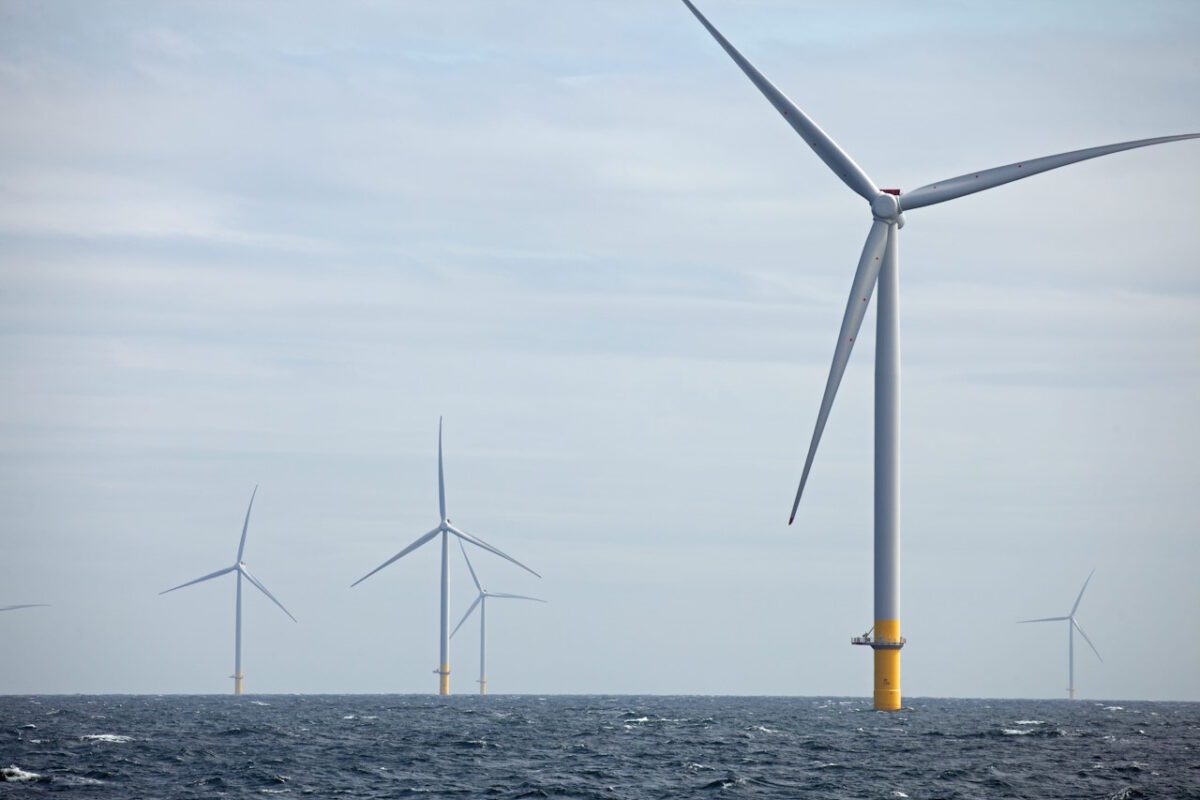The full scale of what is facing offshore wind developers in Australia is becoming clearer, with the latest project to hit the federal environment queue proposing mammoth turbines 375 metres tall from base to blade tip, and underlining the complexity of the task.
The epic dimensions of the 172 turbines that the Great Eastern project is proposing for the Gippsland offshore wind zone were unveiled in documents lodged under the EPBC process.
The up-to 14GW turbines will capture winds travelling between 9.1 m/s and 9.4 m/s, but their size almost pales in comparison with the scale of works that will need to be completed before operations start.
The 2.5 gigawatt (GW) project, which is being developed by Macquarie Asset Management’s Corio Generation, is one of 12 projects that were granted feasibility licences last year.
The feasibility licences give the companies exclusive seven-year seabed rights to develop their project – including site and environmental investigations and community consultation – and to apply for a commercial licence to build and operate a wind farm.
But among the first jobs to get underway is joining the federal environmental approvals queue at the EPBC, which outlines the huge amount of work that will need to be done over the coming seven years.
Construction is penciled in to start in 2028. The EBPC application says this will take just three to four years, suggesting a launch year of 2032.
Right now, the Great Eastern project envisages fixed bottom foundations given the water depths of its section of seabed are less than 70m, but the EPBC documentation offers the first of many qualifications that more work needs to be done to be certain.
The turbines will be connected via a network of buried and seabed-level cables sized anywhere between 630mm and 1200mm thick, and hook into one of up to eight offshore substations.
The offshore substations’ main role will be to collect electricity and boost its voltage level from 66-132kV to 220-500kV so it can be exported into the onshore coordinated connection points, which are being organised by VicGrid.
To get to those onshore points, Great Eastern wants to use horizontal directional drilling – the kind pioneered and perfected by the US shale oil and gas industry – rather than digging trenches to keep all cables underground.
VicGrid wants only underground options for connecting the offshore to the onshore, which means an underground, custom-built cable transition joint bay will need to be built to link the offshore cable with the onshore cable within 500m of the coastline. This bay will need a 25,000 m2 compound for construction, and have a 1,000 m2 permanent footprint.
The project must also factor in tides, wave heights and currents, which are affected by seasonality, as well as no-go areas already used for gas extraction.
Huge job for EPBC
The EBPC documents outline the sheer scale of what offshore wind developers must achieve from both a construction perspective and engagement.
Great Eastern’s project footprint crisscrosses private freehold, Crown land, government roads, services and utilities land, parks and reserves, recreation areas and plantations.
Corio says it has been talking to people and organisations with an interest in the Gippsland offshore wind zone since 2021, and identified 83 different people, groups, agencies, educational organisations and businesses that it must talk to or reference.
It says the project team has already met with some 3000 locals at pop-up and public-facing events.
While Corio will need to continue winning over these myriad stakeholders, the EBPC may be one of the most difficult given the lengthy timeframes that challenging, but technologically understood, renewable energy projects onshore have faced.
So far, the project has identified 59 threatened and migratory marine species which will be affected by work on Great Eastern.
These include 27 seabirds, including albatrosses, petrels, tern and fairy prion, 29 shorebirds and migratory land birds, eight listed threatened and/or migratory marine mammals including the pygmy blue whale and southern right whale, three threatened and migratory marine turtle species, and six threatened and/or migratory fish, including the white shark.
The onshore species affected by the project include the vulnerable growling grass frog and green and golden bell frog, 41 species of threatened or migratory birds including the critically endangered regent honeyeater, swift parrot, orangebellied parrot, and curlew sandpiper, two fish species, two reptiles, and three ecological marsh and grasslands.
The Gippsland offshore zone was Australia’s first, being declared in December 2022.



